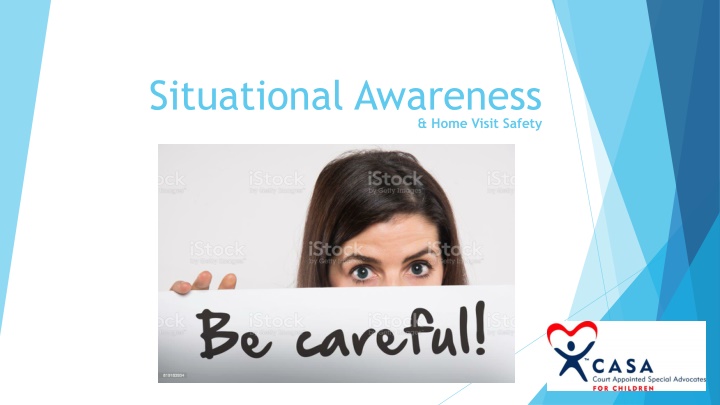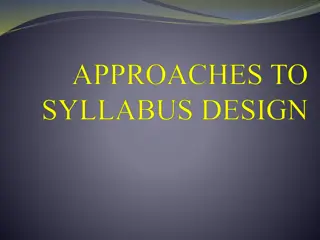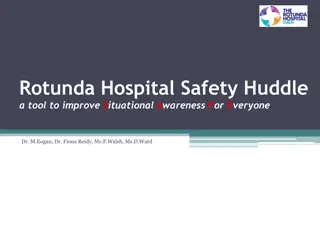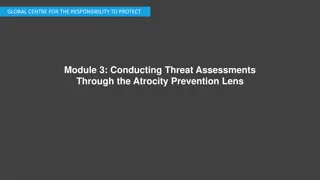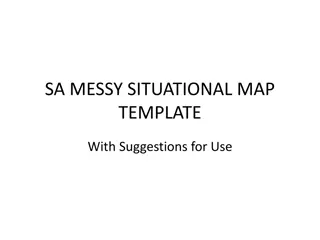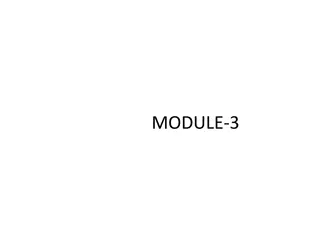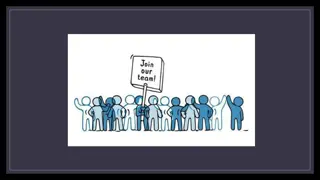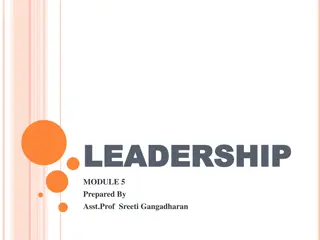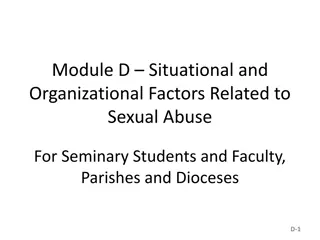Enhancing Situational Awareness for Home Visit Safety
Situational awareness is crucial for observing and being attentive to your surroundings to prevent accidents and errors. Understanding different levels of situational awareness, from a relaxed alert state to an active threat response, can significantly improve safety and decision-making in everyday situations. By enhancing your situational awareness, you elevate your family's safety and ability to anticipate and respond effectively to potential risks.
Download Presentation

Please find below an Image/Link to download the presentation.
The content on the website is provided AS IS for your information and personal use only. It may not be sold, licensed, or shared on other websites without obtaining consent from the author.If you encounter any issues during the download, it is possible that the publisher has removed the file from their server.
You are allowed to download the files provided on this website for personal or commercial use, subject to the condition that they are used lawfully. All files are the property of their respective owners.
The content on the website is provided AS IS for your information and personal use only. It may not be sold, licensed, or shared on other websites without obtaining consent from the author.
E N D
Presentation Transcript
Situational Awareness & Home Visit Safety
What is Situational Awareness? Situational Awareness is the ability to observe and pay attention to what s going on around at all times. The military often refers to situation awareness as the Bubble , as in what s going on in your immediate vicinity. And you lose your bubble your chance of human error and mishaps spikes dramatically. The Coast Guard credits 40% of mishaps with the loss of situational awareness.
Levels of Situational Awareness
Levels of Situational Awareness Condition White This is when you're the average American walking through the mall on a Saturday afternoon, not a care in the world at all. No thoughts of what could go wrong or who's being suspicious. Needless to say, this is the condition you should avoid at all cost! Condition Yellow This condition is most commonly known as being in "relaxed alert". Which is when there's no perceived danger but you are keeping your eyes and ears open to potential mishaps. We will go over what "baseline" is later, but just know that this should be your baseline when practicing to improve situational awareness.
Condition Orange You've noticed an obvious threat and are going through what you should be doing in your head or are preparing for action. When responding to a threat, no matter how large, this should be the condition you stay in. If you become more excited and get carried away that's when mistakes get made. So when you respond to a problem keep it orange. Condition Red Red could be the most dangerous of these conditions, because it represents anger. And when one acts out of anger it's a recipe for disaster, not many people do things their most proud of when they're in this state. So if you notice you're becoming more angry than just involved, cool it down. The phrase "I wasn't thinking" is often used in this state. Grey/Black Condition These two are very closely linked, they represent fear and paralyzing fear. And the presence of inaction is often just as damaging as poor action, so don't let this condition overcome you at all if possible. There are times when those we love might be put in jeopardy and we are frozen due to our love for them and not wanting to do something that would hurt them. Bust just remember that action will beat inaction most of the time!
Enhancing your sense of situational awareness will increase your ability to be more present in day to day situations, and will help you to make better decisions in your life. This skill isn't just meant for covert operatives or government assassins after all. It's just another way of increasing mindfulness. Applying situational awareness in your personal life will allow you to become more observant in general and not flippantly walk into situations that could potentially present a high level of risk to you and your family. Personal Benefits Family's Safety Is Elevated Due To Your Enhanced Ability To Pay Attention Ability To Anticipate Needs And Actions Of Those Close To You Adapt To Situations Quickly General Benefits Memory In General Will Improve Over Continued Practice Will Be A More Valuable Person In Your Community Lead A Safer More Focused Life
Practice Makes Perfect Take a few minutes to view these videos on situational awareness scenarios. Let s see how observant we can be. Scenario #1: https://youtu.be/MYEAQG62pYA Scenario #2: https://youtu.be/viqK_-yNaog?list=PLU8GEVIDVzDOByvZtio7T7ePG8LSlcqu Scenario #3: https://youtu.be/Eblf60WyUzk?list=PLU8GEVIDVzDOByvZtio7T7ePG8LSlcqu_ Awareness Test: https://youtu.be/U1saQoMRD8A
Spot The Pick Pocket: https://www.youtube.com/watch?v=1a6W6fXqDhg#t=139.255016231 Consider the Following questions: Did you find the pick pocket? Did you find the pick pocket video Challenging? What about it made it challenging? Have you been in situations where your attention was drawn to multiple things simultaneously?
It is often challenging to focus our attention on more than two things at a time. However, we lose situational awareness when we do this because there are often more than two elements in any given situation. The following video is a great representation of identifying critical elements of information. The video you are about to view is called Brian s Video. Brian will ask questions during the video. Please write down your answers to his questions on the sheet provided. Brian s Video: https://www.youtube.com/watch?v=xcI2ar-fVOE
How Can We Apply Situational Awareness to Home Visits? Set the appointment up by phone Have forms semi completed Familiarize yourself with the case. Review notes, background check information, criminal history, mental health issues, etc. Lookup the address prior to and check out the neighborhood. During the visit: Introduce yourself and have your Court ID visible. When you enter the home, inquire about who is presently there Explain your purpose of the visit Observer your surroundings from the time you pull up. Look around at the neighborhood Look for potential threats vicious animals, human threats, etc. Observe the home inside and out. Where are your exits? Who is in the home? What is laying around the home?
Getting to the Door: Lock your car Before entering a fenced yard, make noise to see if any animals are present. After knocking, stand away from the door and to one side if possible hinge side is best for providing protection. LEAVE THE AREA IF YOU INSTINCTS TELL YOU TO! Entering the Home: Always follow the client. Do not let them behind you. Scan the inside of the home before entering. Once in the home, look around for signs of a dog. Ask if the dog is safe/friendly. You can always ask for the dog to be put up. Don t enter the home if you suspect the client to be under the influence. Make eye contact. Sit near an exit door and be prepared to leave at any sign of danger. Do not allow anyone between you and the door. After the Visit/Vehicle Safety: Have your keys in hand when returning to your car. Check the inside of your car before getting in. Document any unusual or unsafe activity. Park in a well lit area Keep doors and windows locked.
If a Crisis Arises: Talk Softly Try to keep calm Tell the person you are expected elsewhere or a co-worker has been instructed to call for if you are not out at an agreed time. Suggestions About Dogs What to do When Approached by a Strange Dog: Treat all breeds the same ALL DOGS BITE! NEVER look the dog in the eye. NEVER pat the dog on the top of it s head. Be aware of your body language, voice and tone. NEVER turn your back on a dog or run away. Walk Slowly. What to do When Approached by an apparently vicious dog: Don t get out of your car if you are already in it. Do nothing that seems threatening to the dog. This includes spraying it with pepper spray. Throw dog treats or tennis balls to distract the dog. Protect your face and neck. Do not play dead. If bitten, go to the Emergency Room. Bites must be reported to the Humane Society.
Tips from a Caseworker Watch this video below to reiterate the tips we have went over and other things you can do to ensure your safety. Home Visiting Safety: Staying Safe & Aware on the Job: https://youtu.be/kL3r_3N_Qek
This Concludes our Training on Situational Awareness. Below you will find some additional video resources that can aid you when doing home visits and in your personal life. Dangerous Decals: https://youtu.be/OOSgs1BIlk8 Retired Navy Seal Explains Situational Awareness: https://youtu.be/OOSgs1BIlk8
